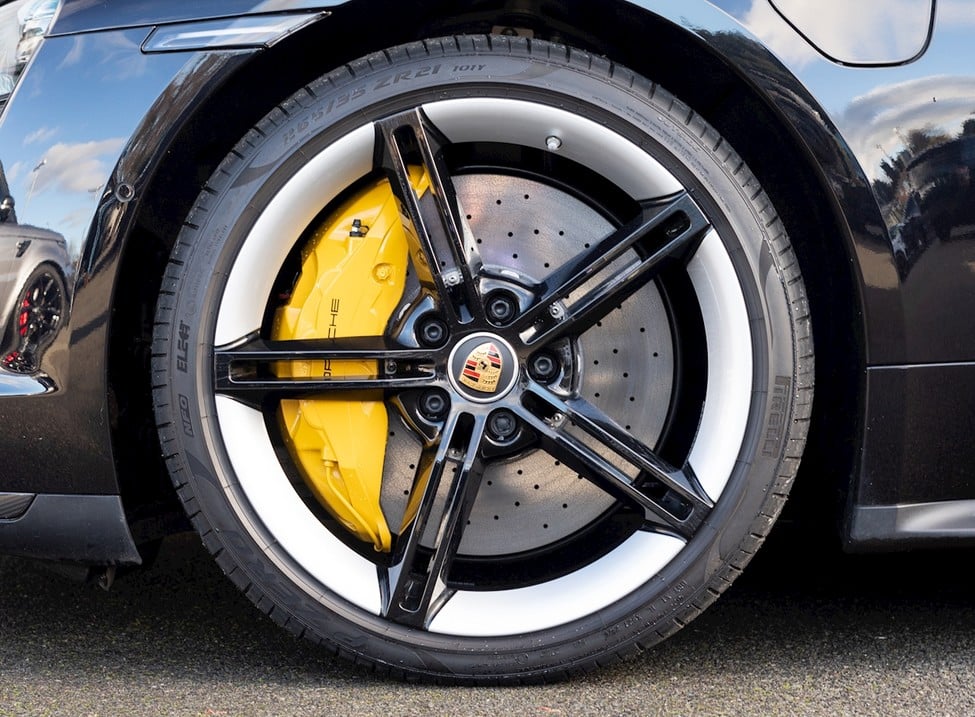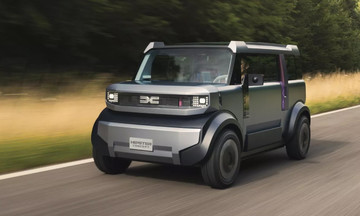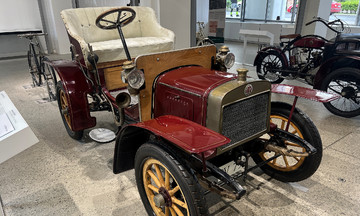The anti-lock braking system (ABS) is a familiar safety feature on most cars. However, in electric and hybrid vehicles, the operating mechanism of ABS has many differences compared to internal combustion engine vehicles.
How ABS works on gasoline cars
On traditional cars with mechanical brakes operating with hydraulic oil, when the driver applies the brakes, the force applied to the pedal pushes oil to the calipers, increasing the pressure that clamps the brake pads onto the disc, slowing the rotation of the wheels. At this point, the ABS monitors the wheel speed, preventing the wheels from locking up during hard braking.
Specifically, if the ABS sensors detect one or more wheels showing signs of locking up, the system automatically releases some brake pressure on that wheel and then reapplies it instantly. This process is performed repeatedly until the wheel locking phenomenon is no longer present. This safety mechanism helps the car decelerate effectively and minimizes the loss of control due to locked wheels.
How ABS works on hybrid/electric vehicles
Unlike gasoline cars, electric and hybrid cars are often equipped with regenerative braking, in addition to the conventional braking system. With regenerative braking, when the car decelerates (the driver releases the accelerator or presses the brake pedal), the electric motor reverses and acts as a generator, pulling back the motor's rotor. This process generates electricity to recharge the battery while creating electromagnetic resistance. This resistance causes the wheels to decelerate, creating the regenerative braking effect.
 |
Mechanical brake caliper on the Porsche Taycan electric car. Photo: *360wheels* |
Regenerative braking and mechanical braking on electric vehicles do not operate independently but are coordinated in parallel under the control of the central control module (ECU). When the driver applies the brakes, the signal does not go directly to the hydraulic oil as in gasoline cars, but is sent to the controller to calculate the brake force distribution ratio.
During light braking at high speeds, or when the battery can still receive power, the system will prioritize regenerative braking to both decelerate and recharge. Mechanical braking intervenes only minimally to maintain stability. Conversely, when the car needs to brake hard, moves at low speeds, or the battery is full, and regenerative braking is not effective, mechanical braking is prioritized. In emergencies, both braking mechanisms can operate simultaneously. If the system detects a risk of wheel lockup, ABS will automatically reduce regenerative braking force and adjust the hydraulic brake pressure, helping the vehicle maintain traction and stop safely.
Thus, ABS on hybrid or electric vehicles is fundamentally the same as on gasoline cars; the only difference is that the mechanical braking system works in conjunction with regenerative braking. The intervention level of regenerative braking and the brake force distribution between the two systems will vary depending on the car manufacturer, model, or driving mode to create the specific driving experience that the manufacturer aims for.
Notably, brake pad wear on electric vehicles differs significantly from gasoline cars and also varies depending on the drive configuration. With front-wheel-drive (FWD) electric vehicles, most of the deceleration is done by the motor located on the front axle, through regenerative braking, so the front mechanical brake pads rarely have to work, leading to the rear brake pads wearing out faster. Conversely, in rear-wheel-drive (RWD) cars, the rear-mounted motor handles most of the regenerative braking, causing less wear on the rear brake pads, while the front ones bear more load when auxiliary mechanical braking is needed. On all-wheel-drive (AWD) electric models, the wear between the front and rear brake pads is more balanced, but still depends on how the manufacturer fine-tunes the brake force distribution system.
This difference requires electric car users to pay more attention to maintenance, as the condition of worn brake pads is no longer as predictable as on traditional cars. Specifically, the front brake pads on gasoline/diesel cars often wear out faster than the rear ones. This is because, when braking, the weight of the car shifts forward, causing the front axle to bear most of the braking force, and the braking system is also designed to prioritize the front wheels to keep the car stable and limit tail skid.
Ho Tan










